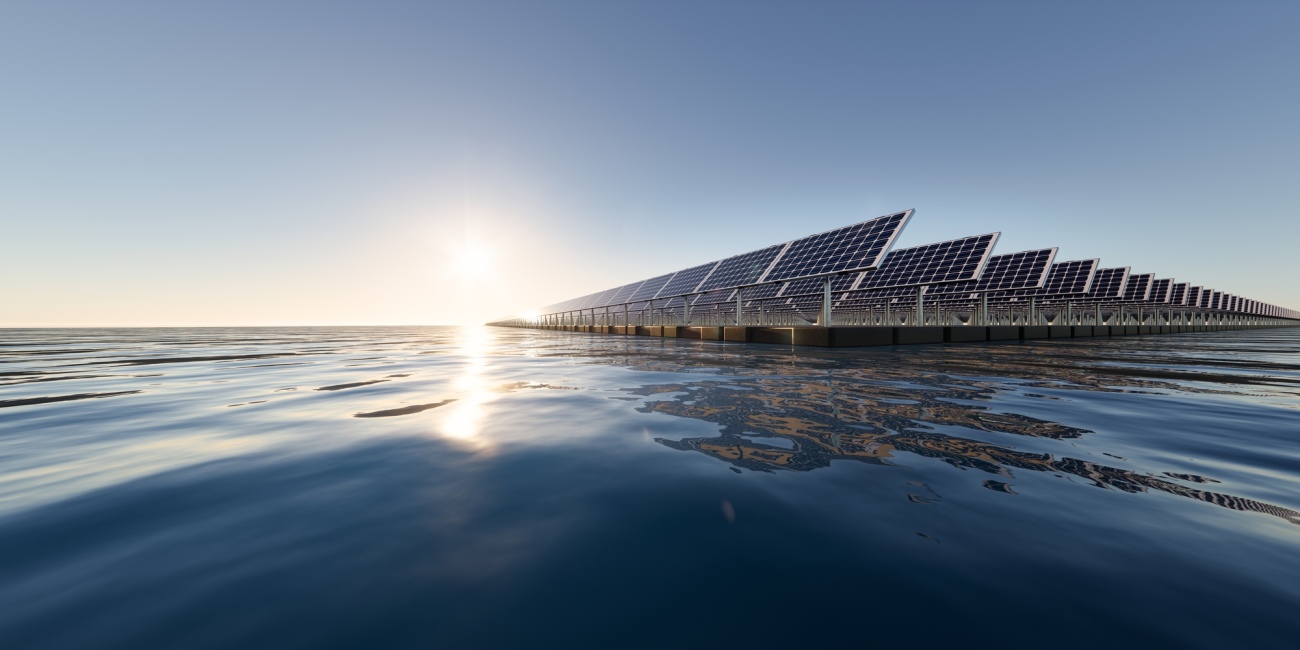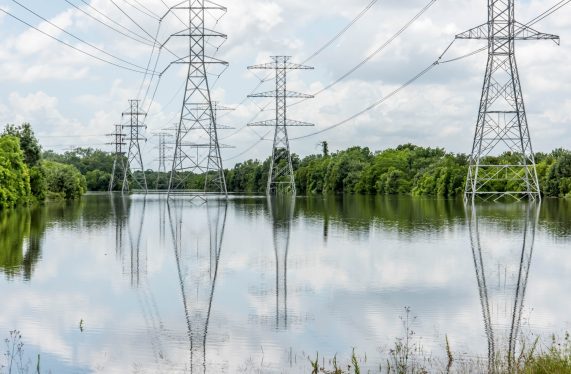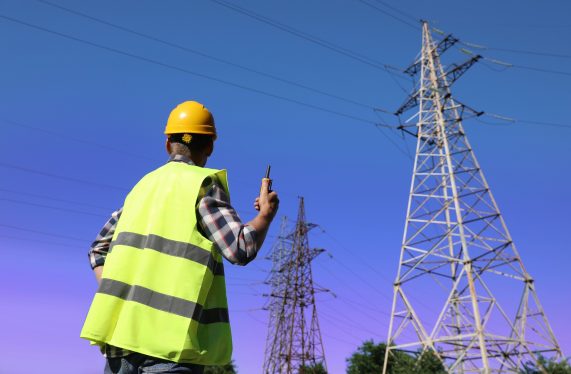The increasing utilization of solar radiation gradually leads to the coverage of vast land areas and numerous rooftops with photovoltaics.
Although rooftops are often excellent for solar panel installation, they are not always suitable, and vacant land is usually expensive in suburban areas.
Thus, the renewable energy sector worldwide is dynamically evolving, with floating photovoltaic parks being one of the most innovative steps towards sustainable energy.
Let's examine in more detail the advantages, disadvantages, legislative framework, and prospects of this technology in our country.
What are Floating Photovoltaic Parks and how are they interconnected

Floating photovoltaics (floatovoltaics) are a new technology developed across Europe, primarily on artificial reservoirs of hydroelectric power stations, irrigation reservoirs, and even on reservoirs created in coal mines.
Additionally, the installation of photovoltaics on the sea is being explored, as oceans cover 70% of the Earth's surface, providing ample space.
Floating photovoltaics represent an innovative form of photovoltaic installations, where solar panels are mounted on a floating platform, which is then connected to the terrestrial electrical grid via underwater cables.
Potential Benefits of Floating Photovoltaic Parks

1. Space Utilization
In rural communities, there is concern that converting agricultural land into photovoltaic parks may be detrimental to food security.
However, utilizing water surfaces for floating photovoltaic installations allows for the use of part of the unused water area without affecting agriculture or other human activities.
A significant advantage of floating parks compared to land-based ones is that they do not require land purchase for their installation.
2. Efficiency
The performance of solar panels decreases with increasing temperatures above 25°C.
For example, most solar panels have a temperature coefficient ranging from -0.3% to -0.5% per °C.
This means that for each degree Celsius, efficiency decreases by a certain percentage.
Unfortunately, in hot climates like Greece, this reduction in efficiency can significantly decrease solar energy production.
Placing solar panels on water surfaces entails natural cooling, keeping them cool and increasing their efficiency.
Moreover, the use of bifacial solar panels allows them to generate energy from both direct sunlight and reflected light from the water.
3. Conservation of Water Resources
Another notable benefit of floating photovoltaics is that the panels can help shade the water body, preventing the evaporation of freshwater.
This can be particularly beneficial in dry climates or during summer droughts.
Indeed, a study from 2021 has shown that covering 4,000 miles of California's canals with solar panels could conserve 65 billion gallons of water annually by reducing evaporation.
4. Environmental Sustainability
Undoubtedly, energy production through floating photovoltaic systems contributes to reducing greenhouse gas emissions and transitioning to a greener future.
5. Integration of Renewable Energy Projects
Installing photovoltaic parks on hydroelectric dams allows for the utilization of existing infrastructure by harnessing the energy of solar panels, reducing the development costs of both projects.
Additionally, combining offshore wind farms with floating photovoltaic panels, which can share the same interconnection line, is being explored.
Limitations of Floating Photovoltaic Parks
- Reduced Absorption of Solar Radiation in Marine Floating Parks: Photovoltaic installations in marine waters face challenges as seawater can leave a coating on the panels, reducing the absorption of solar radiation and thus electricity production.
- High Equipment Costs: Floating photovoltaic installations are less common and therefore require specialized support equipment to keep the panels afloat. Thus, the unique technical characteristics of this technology make the procurement of specialized equipment expensive, increasing the development costs of such renewable energy projects.
- Difficulty in Finding Installation Sites: Installing floating photovoltaic stations is a complex process as site selection can be difficult and time-consuming due to high winds, waves, and equipment support challenges. Thus, licensing issues and development and construction costs are increased.
- Maintenance Challenges: Accessing solar panels located on the water surface can hinder maintenance and repair procedures.
- Potential Impacts on Aquatic Ecosystems: The construction of floating photovoltaic arrays may disturb aquatic life, particularly in pristine areas. Once installed, panels shading the water surface reduce available sunlight, affecting ecosystems. For example, research has shown that floating solar farms can affect the underlying water layer in a water body. Changes in water conditions may lead to nutrient concentration increases and fish kills. Further research is needed to examine and minimize the ecological impacts of floating photovoltaic stations.
What are the pros and cons of Floating Photovoltaics
| Pros | Cons |
|---|---|
| Additional renewable energy production without the use of additional land | High initial installation costs |
| Utilisation of water bodies such as reservoirs, lakes and dams | Potential impact on underlying aquatic ecosystems |
| Increased efficiency due to cooling from the underlying water | Possible reduced solar radiation absorption due to salt coating from seawater |
| Saving of water resources by limiting evaporation of water | Difficulty of permitting and maintenance |
| Limited algal growth and salt concentration caused by evaporation | Limited scalability in small water bodies |
| Reduced conflicts with other land use purposes | Limited maturity and proven performance of floating PV technology |
Source: Floatovoltaics: Floating Solar Panels (https://www.greenlancer.com/po...)
The Cost of Floating Photovoltaics
The cost of floating solar panels varies depending on several factors, including the cost of support systems, the method and equipment used for their connection, labor, and the capacity of the system.
Therefore, floating photovoltaics are much more expensive per MW compared to conventional land-based parks, as the former are smaller in scale and require more research.
Research Needed for the Advancement of Floating Photovoltaics
More research is needed to improve the performance and cost of existing floating photovoltaic systems.
Researchers can further analyze the effects of environmental factors, such as winds and waves, on the orientation of solar panels and optimize support systems.
Efforts can also focus on creating more environmentally friendly materials for floating panels, while ensuring that installations do not harm marine ecosystems.
Finally, there is also a need for research on the most effective integration of floating photovoltaic parks with existing solar and wind energy infrastructure on land and at sea to improve energy storage and distribution.
Floating Photovoltaics in Greece and Regulatory Framework
With the intervention of the Minister of Environment and Energy, the installation of 10 pilot offshore floating photovoltaic parks with a capacity ranging from 0.5 MW to 1 MW is prioritized.
Specifically, through legislative regulation, these pilot projects are exempt from competitive bidding processes for grid connection, ensuring priority connection.
With this new regulation, the Ministry of Environment and Energy encourages the development of floating photovoltaics in marine waters with initially small-scale projects, indicative of real investment interest.
Already, two large-scale projects in marine waters have been submitted for licensing to the Regularoty Authority for Energy (RAE).
The first one with a capacity of 11.6 GW involves the installation of photovoltaic panels covering an area of 95.6 square kilometers in the northern Gulf of Euboea, the southern Gulf of Euboea, and the Gulf of Domvraina.
Another large project with a capacity of 7 GW has applied for a license to install floating photovoltaics in the Amfilochia area. Smaller-scale projects (1 MW) have been submitted for application to RAE for marine areas in Boeotia and Karystos.
The current legislative framework also provides incentives for the development of floating photovoltaics in artificial lakes, namely priority connection to the grid and operational support.
The new legislative initiative is expected to involve the development of 10 floating photovoltaic stations with a capacity of up to 8 MW each, in reservoirs or artificial lakes that are not under any protection status and in artificial water bodies created in exhausted mining operations such as mines, quarries, etc.
At present, the Ministry of Environment and Energy does not plan any intervention for the installation of floating photovoltaics in natural lakes.
The institutional framework allows for the placement of floating photovoltaic parks in artificial lakes and reservoirs outlined in River Basin Management Plans (RBMP) of the country's water districts, not falling under any protection status, with coverage reaching up to 10% of their area.
Investment projects for a total capacity of over 800 MW have been submitted to almost all artificial lakes and reservoirs in the country, such as the Kastraki artificial reservoir, the Pournari technical reservoir, and the Polyfytos artificial lake in Kozani.
It is worth noting that a German company, which constructed Europe's largest floating photovoltaic in the Netherlands, secured a license from RAE for a project with a capacity of approximately 230 MW in the area of Kremasta.
It should be emphasized that during the installation and operation of photovoltaic systems, fishing, boating, commercial, and eco-tourism activities within artificial reservoirs and marine areas of the country should not be obstructed.
Floating Photovoltaics: Solar Energy Installations of the Future

In conclusion, floating photovoltaics emerge as a promising technology for sustainable energy production in Greece and globally.
With the right legislative support, scientific research, and effective implementation, floating photovoltaic stations can contribute to reducing greenhouse gas emissions and enhancing sustainability in the energy sector.
At Synenergy Advisors, we support the development of projects that promote green energy, with smooth integration in the natural environment and respect to the ecosystems.



